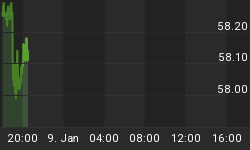The current US boom is the strangest in US history. Despite rising consumption, investment and employment a large number of Americans are convinced that the economy is on the verge of collapse. For this perception we can thank the grossly dishonest reporting of the leftwing MSMP (MainStream Media Party).
However, this does not mean that the economy is not facing problems, only that journalists are too dumb to recognise them. As is invariably the case the economic commentariat's principal indicator is consumption. This should cause us to reflect on the recent recession in order to try and gain some perspective on the Bush boom - the one lefty journalists say is not happening.
It comes as a great surprise to many, including so-called journalists, when they are told that consumer spending continued to expand throughout 2001, a fact was confirmed by the Joint Economic Committee of Congress. How could this be the case when everybody knows that Keynes taught that consumer spending drives the economy?
Although the Keynesian explanation rests on the assumption that it is a fall in aggregate spending that causes recessions, it does not assume that the fall must be borne only by consumption. This is why it is argued by some that increased consumer spending largely explains why the recession was so mild. They naturally conclude, therefore, that using consumption to offset a fall in business spending will always hasten recovery
Notice how these commentators focus on consumer spending. These are people who believe that consumption spending makes up about 66 percent of total spending. It doesn't. The reality is that it's about 35 percent of total spending. The confusion comes about because GDP greatly understates total spending. (See Friedrich von Hayek's The Paradox of Saving in Profits, Interest and Investment).
This is because a great deal of intermediate spending is omitted on the grounds of avoiding double counting. If an aggregate spending approach were employed instead of a value-added approach the true situation would become immediately apparent. For example, using the Survey of Current Business for 2002 I calculated that while GDP was $10.083 trillion dollars total outlays were $18.350 trillion once spending on intermediary goods was accounted for.
Looking at the deficiencies of the GDP accounting method returns us to the claim that increased consumption spending alleviated the effects of the recession, particularly regarding unemployment. One can agree with this assessment without approving of it.
I pointed out a number times that the recession was unusual in that manufacturing continually contracted for some 18 months or so before it was generally accepted that the economy itself was contracting. March 2001 is now considered the starting point for the contraction, even though this is at least 9 months after, or even longer, before manufacturing output began to fall. Clearly, the high level of employment and consumption deceived most economic observers.
I have written before that if the contraction in manufacturing is comparatively slow while consumption is maintained there should be no reason for employment to rise so long as labour markets are flexible. Eventually, however, unemployment will have to rise as more of the necessary adjustments and liquidations take place.
Relying on consumption spending to maintain living standards is like arguing that the only way to avoid a famine is to eat more. We all know that famines are avoided by producing more food, not consuming the seed corn. Investing in factories, for example, is basically the same thing. It's not the consumption of cars, refrigerators, computers, etc., that raises living standards but the means to produce them.
Prices have work to do and part of that work is directing resources to where they are most valued. But if prices are distorted production will be misdirected. For the government to direct spending at the lower stages of production is to direct resources away from the higher stages. And these are the stages responsible for America's high living standards, which brings me to the Fed.
In 2001 the Fed cut the federal funds rate 11 times, I think, reducing the short-term rate to 1.75 per cent by March 2002, something that hadn't been seen in about 40 years. Moreover, if we adjusted the rate for inflation it was zero in real terms. (No wonder consumer spending increased by an annual rate of 6 percent during the fourth quarter 2001 even as gross investment dived). What isn't understood is that this was a bad policy. Even assuming that cheap money policies kick start industry they are bound to create more malinvestments that will have to be liquidated at a later date.
Now the normal process in a cheap money environment is for industries to borrow and expand thus bidding for factors of production until hit by a profits squeeze. But as we can already see, consumption spending was still being stoked by the Fed. We would therefore have expected a situation to develop where industries, especially in the higher stages, would run into rising costs far sooner than expected. In addition, on would also expect the current account to deteriorate as newly created money sucked in increasing quantities of imports.
However, economics is far more complex than most people realise. It is my opinion that by cutting capital gains taxes in June 2003 President Bush greatly facilitated the economic expansion and so deferred the inevitable readjustment period. The President grasped what his critics failed to see, and still do: Reducing the costs of production spurs investment, lowers prices and increases output.
A final note: consumption doesn't drive an economy, entrepreneurship does that while savings fuel it.
















